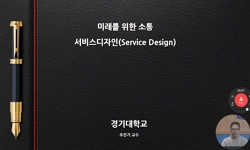<P><B>Abstract</B></P> <P>Experience-centric service (ExS) is a type of service through which customers experience emotionally appealing events and activities that result in distinctive memory. The literature argues that...
http://chineseinput.net/에서 pinyin(병음)방식으로 중국어를 변환할 수 있습니다.
변환된 중국어를 복사하여 사용하시면 됩니다.
- 中文 을 입력하시려면 zhongwen을 입력하시고 space를누르시면됩니다.
- 北京 을 입력하시려면 beijing을 입력하시고 space를 누르시면 됩니다.


Experience Design Board: A tool for visualizing and designing experience-centric service delivery processes
한글로보기https://www.riss.kr/link?id=A107653114
- 저자
- 발행기관
- 학술지명
- 권호사항
-
발행연도
2018
-
작성언어
-
- 주제어
-
등재정보
SCOPUS,SSCI
-
자료형태
학술저널
-
수록면
142-151(10쪽)
- 제공처
-
0
상세조회 -
0
다운로드
부가정보
다국어 초록 (Multilingual Abstract)
<P><B>Abstract</B></P> <P>Experience-centric service (ExS) is a type of service through which customers experience emotionally appealing events and activities that result in distinctive memory. The literature argues that ExS design should be a research priority in this experience economy, yet little is known on how to articulate ExSs in their design. This paper proposes a tool called Experience Design Board for visualizing an ExS delivery process as a basis for its analysis and design. The tool is a matrix-shaped board where the key factors of experience creation in ExS (namely, servicescape, frontstage employees, other customers, backstage employees, and technology support systems) are represented in rows, and the customer experience phases are placed in columns. The tool is useful in analyzing and designing how the key factors of ExS create customer experience. The tool integrates several work streams within the evolving ExS literature into its structure and is generic enough to accommodate various ExSs in physical and digital experience contexts. By visualizing an ExS delivery process from beginning to end, the designer can obtain a systematic understanding of the essential attributes of ExS and can use it for an effective design. This tool would serve as a basis for service design in this experience economy.</P> <P><B>Highlights</B></P> <P> <UL> <LI> We live in an “experience economy”. </LI> <LI> A key deliverable of this economy is experience-centric service (ExS). </LI> <LI> This paper proposes a tool called Experience Design Board for ExS visualization and design. </LI> <LI> The tool is useful in analyzing and designing key factors of experience creation in an ExS. </LI> <LI> The tool would serve as a basis for service design in this experience economy. </LI> </UL> </P>




 ScienceON
ScienceON






